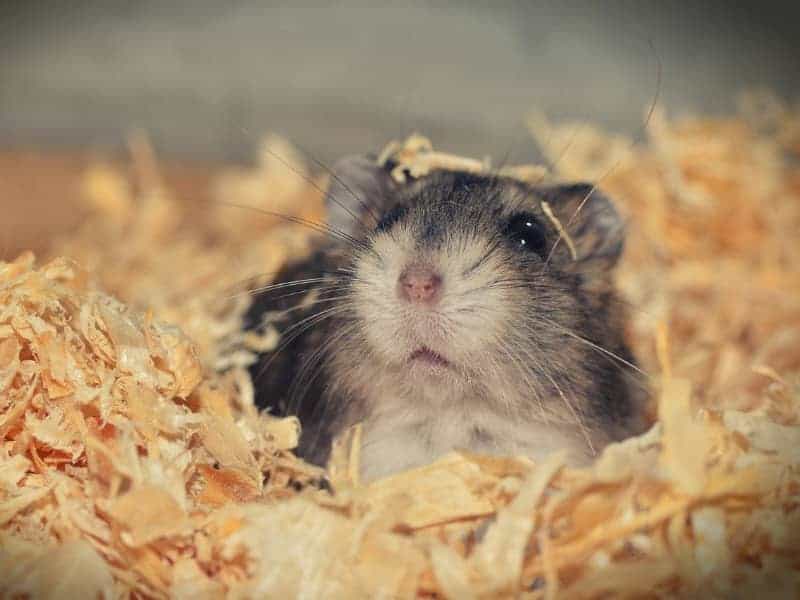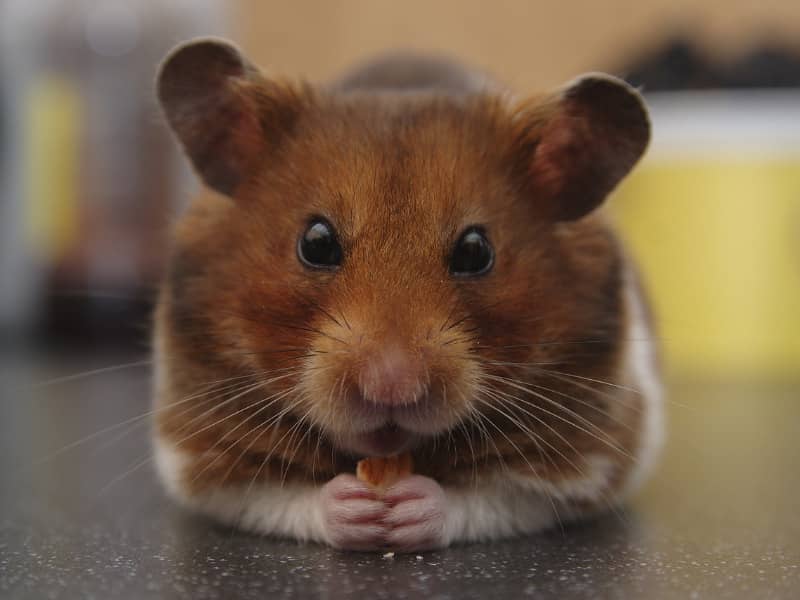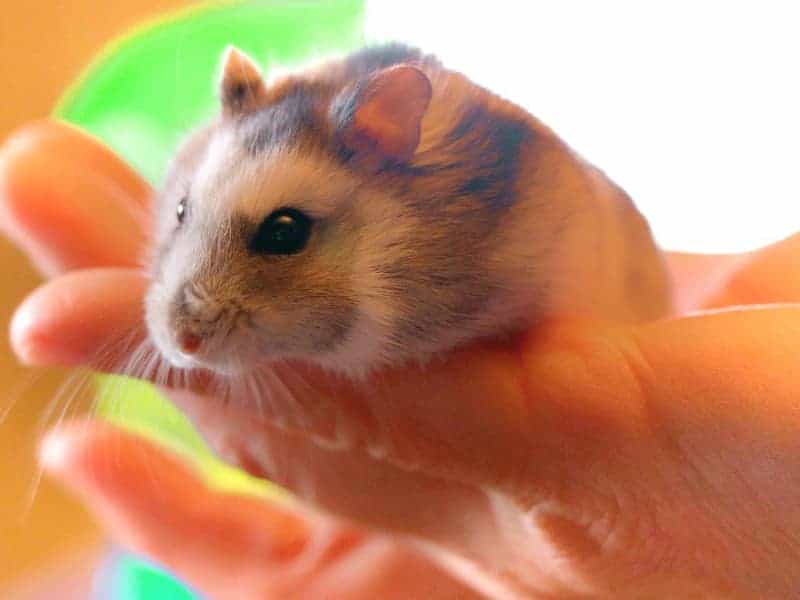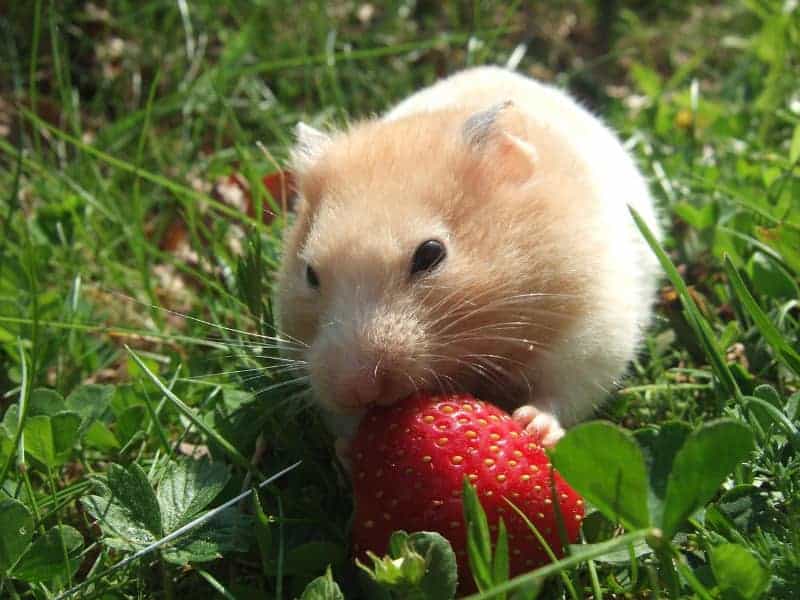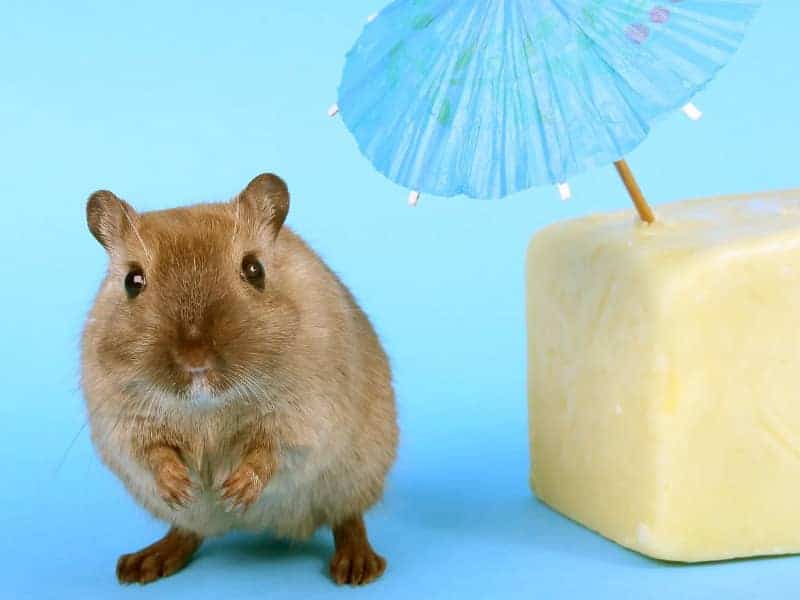
Are hamsters allowed to eat peppers?
Yes, your hamster can eat bell peppers. Peppers are one of the healthiest vegetables around and contain large amounts of minerals, vitamins and antioxidants. They are an ideal nutritional supplement for your hamster. However, there are also a few things to keep in mind when feeding them. What things these are, you will learn in our article.
Which peppers can hamsters eat?
Here you should resort to mild varieties. Never offer a hamster a hot bell pepper. This is because animals should not eat spicy or hot foods. Never touch a hot bell pepper in the wild for your hamster. Therefore, always resort to the sweet peppers. These come in red, orange, yellow and green. As well as in different shapes.
The peppers that you can generally buy in the supermarket are well suited for this. From our own experience we can say that especially the red, orange and yellow peppers are preferred by the hamster. This certainly has to do with the slight sweetness that prevails in these varieties of peppers.
What kind of bell pepper is particularly suitable for hamsters?
The sweet bell pepper varieties are a nice change to give your hamster something special. Often pet owners ask themselves which of the bell pepper varieties is probably best for the animal. Here, thanks to science, there is a clear answer, and that is the red bell pepper. It has by far the most nutrients that are important for the hamster.
Vitamins, carotenoids and antioxidants are particularly strong in red peppers. Don't worry, other types of peppers are not bad for your hamster. They simply contain fewer of these ingredients and are still well tolerated by your pet. If you can't use red peppers, orange and yellow peppers are the two varieties that contain the most nutrients.
Very important, green bell pepper is also a good food for the hamster. However, has only half as much vitamin C and other minerals.
How to feed your hamster peppers
Peppers, like tomatoes, are nightshade plants, so you should never offer your pet the stalk or unripe parts to eat. These parts of the plant contain an alkaloid called solanine. This alkaloid ensures that the plants are spared from parasites and fungal attack. For animals such as hamsters and humans, however, solanine can have adverse health effects.
However, these impairments are only noticeable at high levels. Note, however, that a hamster is only a fraction of the weight of a human. Accordingly, the dose that can become dangerous in a hamster is low. The following symptoms occur when there is too much solanine in the body:
- Nausea
- Sweats
- Headache
- Diarrhea
- Visual disturbances
- Anxiety
These impairments can be massive and especially diarrhea in a small animal can lead to a quick and unforeseen death. Therefore, just carefully remove the stalk and inspect the peppers for immature spots. Basically the same as when you prepare a bell pepper for your meal. Theoretically, your pet can eat the seed, but it is difficult to digest. That is why we always remove the seed.
How much peppers can a hamster eat?
With a normal sized block bell pepper or pointed bell pepper, you should give a maximum of one eighth of the bell pepper at a time to a hamster. Here, of course, it also depends on the size of your hamster. With a young hamster or dwarf hamster you can also halve the eighth again. Especially at the beginning, when the hamster does not yet know paprika, you should start very carefully with the feeding.
Not that the bell pepper is dangerous for your hamster. But for the reason that your hamster absorbs many minerals and fluids at once through the bell pepper. This can lead to diarrhea with the unfamiliar food. This happens rarely, but can never be ruled out. Therefore, you should also closely monitor your hamster after the first feeding of peppers.
If he has severe diarrhea the same day or the next day, then take the peppers off the menu again. If it is only mild diarrhea, then offer less bell bell pepper the next time. Again, watch closely how the animal reacts and in almost all cases, the diarrhea can be avoided by giving less.
You should not offer your hamster peppers more than three times a week. It is a good addition to your diet, but too much of it can cause diarrhea. You should also make sure that the peppers are always eaten completely. Check your hamsters' enclosure at least every other day to see if they are hiding food that could go bad.
Are peppers healthy for hamsters?
Yes, 100 % peppers are healthy for hamsters. Properly offered, they are an excellent way to destroy free radicals in the body. This is because red peppers in particular contain a carotenoid called lycopene. This lycopene is considered to prevent cancer in humans, so why should no animal benefit from this carotenoid song with it.
In addition, peppers contain antioxidants, which primarily in the intestine ensure that the degradation substances (slags), which are also called free radicals, are removed and broken down. These free radicals accelerate the aging process in every organism. Through a healthy diet, humans and animals can slow down this aging process.
The following nutrients are contained in paprika, based on 100 g of paprika:
- Fat: 0.5 g
- Carbohydrates: 6.4 g
- Dietary fiber: 3.6 g
- Protein: 1.3 g
In addition to nutrients, of course, minerals and vitamins are included, which include:
- Beta-carotene
- Vitamin A
- Vitamin B6
- Folic acid
- Vitamin C
- Vitamin E
- Iron
- Potassium
- Magnesium
- Copper
A valuable mix of nutrients that is readily consumed by almost every hamster.
Are all hamster breeds allowed to eat peppers?
Yes, all hamsters are allowed to eat peppers several times a week. However, please pay attention to our feeding recommendation so that your animal is not too much of it. Because too much paprika can be counterproductive and again affect the health of your animal. Therefore, always take into account the size of your animal and then adjust the amount.
We recommend that, if possible, you buy peppers from organic farming. This is much more digestible than conventional peppers. If this is not possible, then wash the bell pepper thoroughly before feeding, so that the pesticides adhering to the peel are well washed off.
Author

-
Garden animal - A life with nature
Welcome to my animal blog! My name is Dirk and I am happy to take you on my journey through the fascinating world of animals and gardening.
Born 54 years ago, I have had an insatiable curiosity for the animal world around me since childhood. Although I have moved professionally in other industries, my true passion has always been animals and nature. It is remarkable how a small garden has become such an important part of my life.
Many of my fondest memories are associated with the animals that share our home. Whether it's the curious squirrels that scurry across the trees in the morning, the colorful variety of birds that visit our feeders, or the busy bees and butterflies that pollinate our flowers, every moment with them is invaluable to me.
This blog is my contribution to share my experiences, discoveries and insights with like-minded people. Here I will share stories of unforgettable encounters with animals, give tips on gardening and creating wildlife-friendly habitats, and take you on my journeys through nature.
Thank you so much for being here!
Cordial,
Dirk aka garden animal
Last posts
- 27. February 2024PetsVeganes Hundefutter – Grün und Gesund?
- 18. January 2024ChickensOregano für Hühner
- November 27, 2023HamsterDiurnal hamsters
- November 24, 2023HamsterHamster hammock

